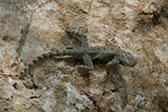

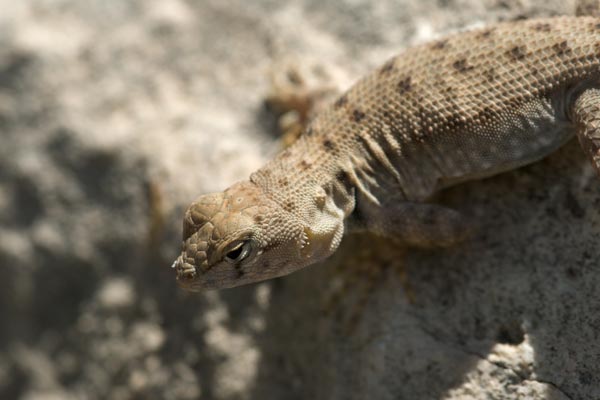
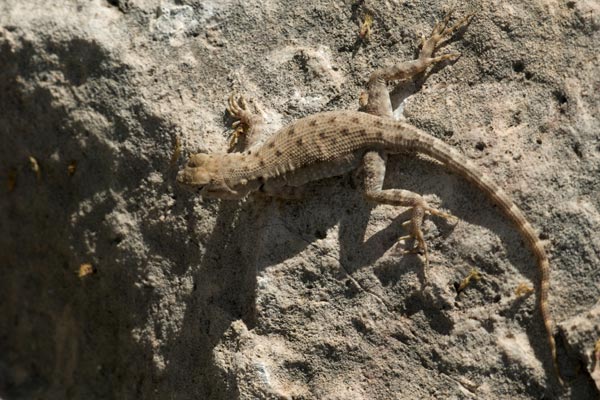
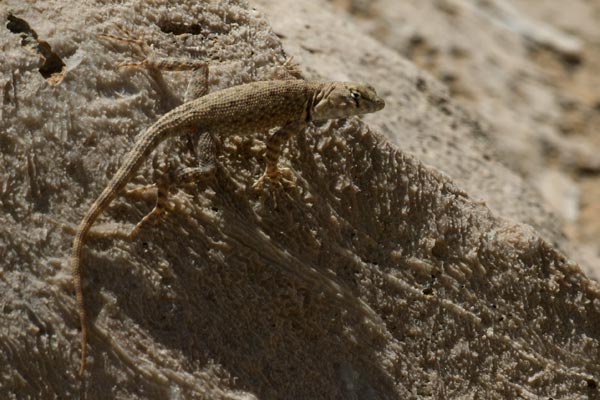

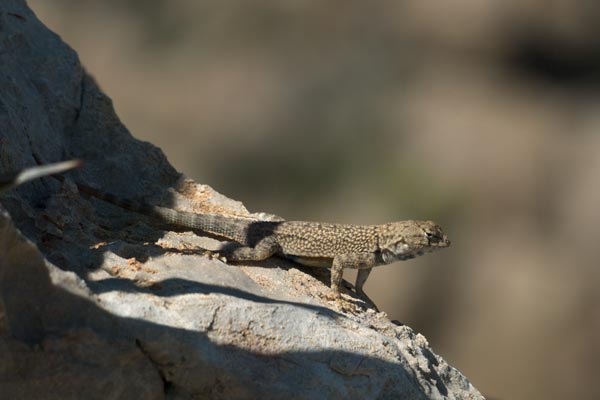
I originally classified these individuals as S. m. merriami, due to their relatively light coloration, indistinct tail rings, and less prominent throat pattern, but have since been told that the distinctive spots identify them as S. m. annulatus.
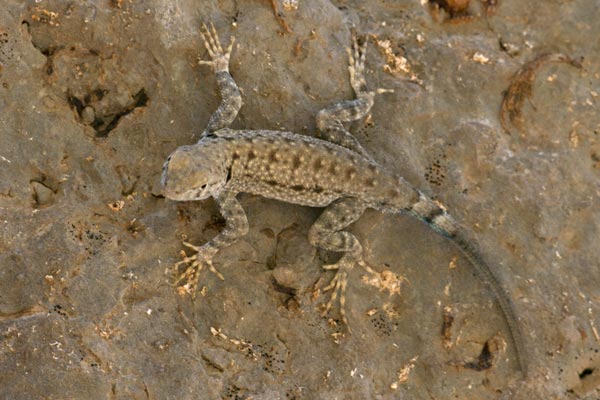
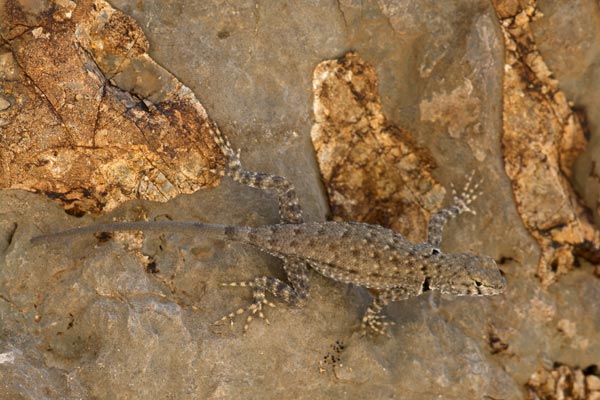

For a species with such a limited overall range, Sceloporus merriami has a remarkably large number of recognized subspecies — seven in all, three of which can be found in Texas (the other four are in Mexico, in case you haven't been paying attention).
Two of the three subspecies are found in Big Bend National Park. I'm pretty certain that the ones I saw in Santa Elena Canyon are S. m. annulatus, due to the relatively dark coloration, distinct tail rings (though not visible in regenerated portions of tails), and the throat pattern that's clearly visible in the last of these photos.
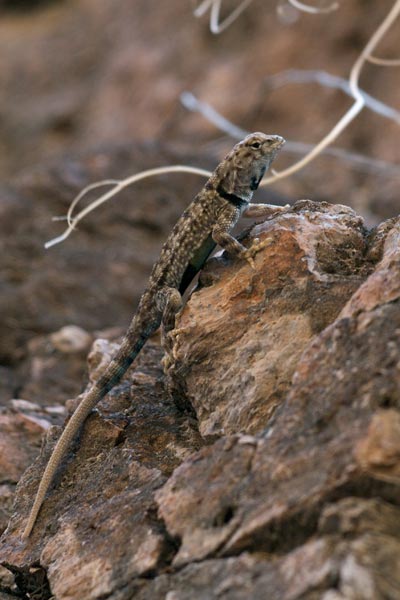
- Conant, R., Collins, J. T. 1998. Peterson Field Guide to Reptiles and Amphibians of Eastern and Central North America, Third Edition, expanded
- Crother, B. I. (ed.) 2017. Scientific and Standard English Names of Amphibians and Reptiles of North America North of Mexico, with Comments Regarding Confidence in Our Understanding, Eighth Edition
- Jones, L. L. C., Lovich, R. E. 2009. Lizards of the American Southwest: A Photographic Field Guide